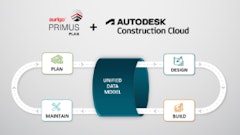Another bridge collapse last month — this time along I-5 in Mount Vernon, WA — again underscores the sorry state of the country’s bridge and highway system. Thankfully, in this case no lives were lost, but that doesn’t mean it wasn’t a costly incident. When you add up the expenses associated with the loss of productivity due to personal injuries, damage to vehicles, emergency repairs to the structure, additional travel time (and fuel expense) for the 70,000+ cars per day that must be re-routed, etc., the price tag for the bridge failure quickly adds up.
Not surprisingly, the I-5 bridge, built in 1955, is one of more than a quarter of Washington state’s bridges deemed structurally deficient or functionally obsolete in a report issued earlier this year by the American Society of Civil Engineers. The collapsed bridge was among those deemed “functionally obsolete”, meaning it was structurally sound but its usage exceeded its intended design. Given its failure after a girder was struck by a passing truck, how imminent might the potential failure be for the more than 700 bridges across the state labeled “structurally deficient”? Extrapolate this across the 600,000+ bridges around the country — of which one in nine are considered structurally deficient — and it becomes an alarming scenario indeed.
We’re all aware of the funding issues that limit the investment in bridge and highway repair and construction. Yet, a further hurdle that tends to be overlooked is bureaucratic red tape. Too often, much-needed projects are substantially delayed or shelved due to the protracted processes, and costs, required to get them past the planning stages.
A presidential memorandum issued May 17th may help to change that. The memo, which builds upon an executive order issued in March 2012, directs a steering committee comprised of representatives from various government entities to work with federal agencies to streamline the review and permitting process of major infrastructure projects. The committee is charged with identifying and prioritizing opportunities to modernize regulations and procedures, and tasked with creating a plan for modernizing federal review and permitting processes. The goal is to cut the aggregate timelines of critical infrastructure projects.
In discussing the memo during a visit to Ellicott Dredges in Baltimore, MD, President Obama stated: “A while back... I ordered everybody who was involved in approving projects to speed up the permitting process for 50 different big projects all across the country, from the Tappan Zee Bridge in New York to the Port of Charleston. And we’ve been able to, in some cases, cut approval times from seven years down to a year. So we’ve made progress. Today, I’m directing agencies across the government to do what it takes to cut timelines for breaking ground on major infrastructure projects in half.” (Source: “Obama memo to streamline harbor deepenings, other projects,” Charleston Regional Business Journal, www.charlestonbusiness.com)
The memo specifically targets large, high-profile federal construction projects. Yet, there is hope that as processes are streamlined at the federal level, state and local agencies may adopt similar methodologies to reduce the time required to initiate infrastructure projects on a smaller scale. The reduction of red tape at all levels of government presents opportunities to complete more projects in a faster, more cost-efficient manner. The end result is economic growth and development in the communities affected, and improved safety for all those who travel along U.S. roads, bridges and highways.




















